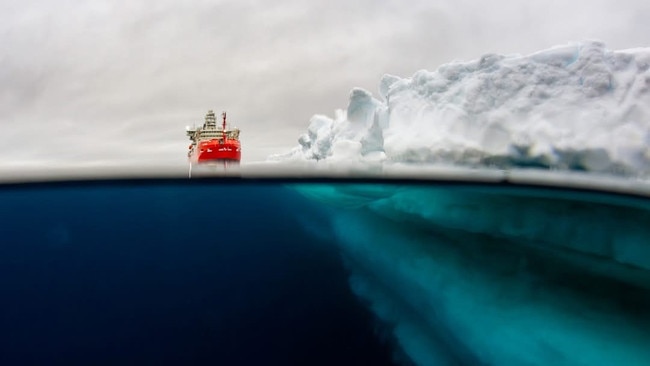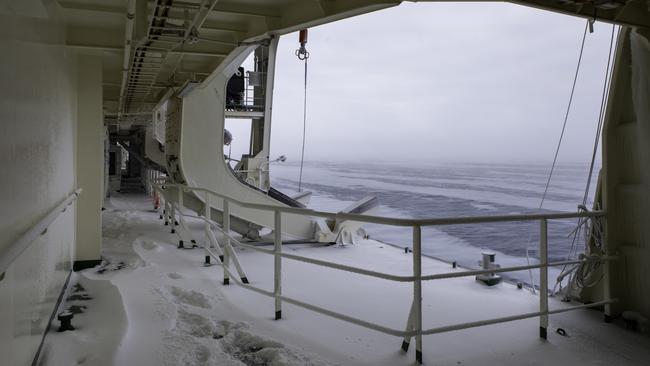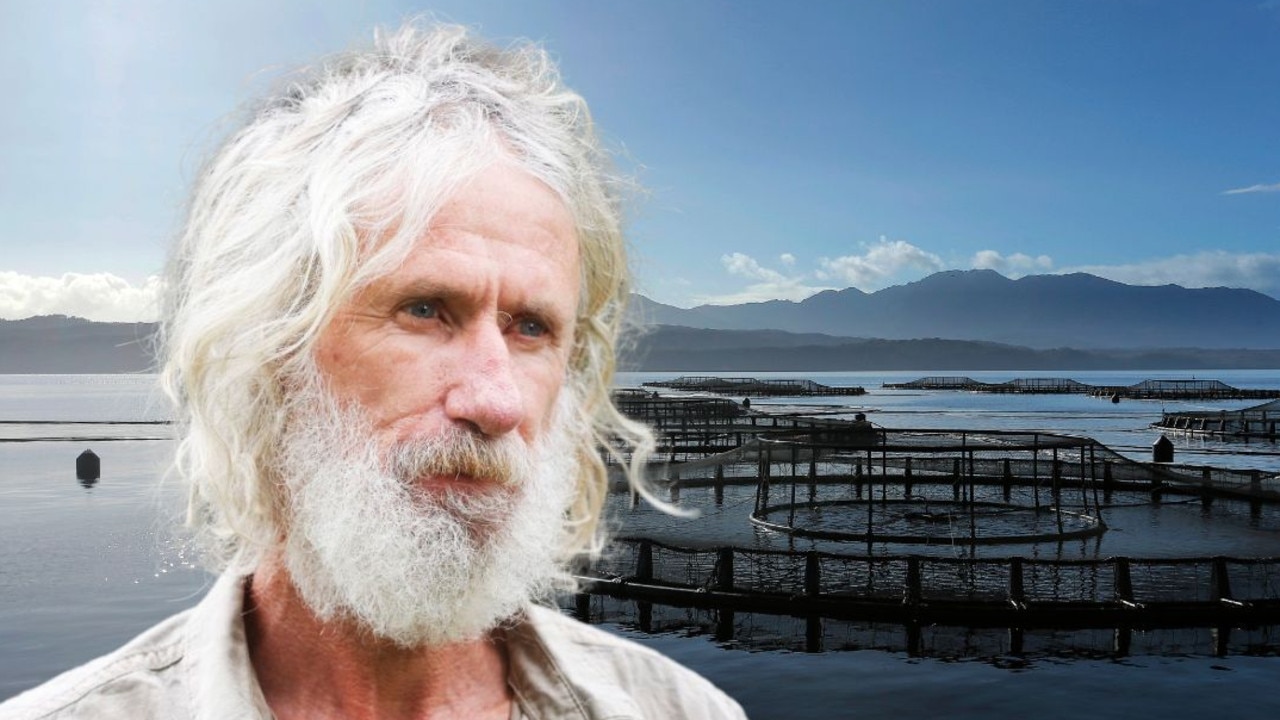RSV Nuyina: Scientists return from Antarctic voyage armed with treasure trove of specimens, data
A group of 60 scientists has returned to Australia after an “epic” Antarctic marine science voyage – and they’re armed with a breathtaking collection of specimens and samples. STORY >>>

Tasmania
Don't miss out on the headlines from Tasmania. Followed categories will be added to My News.
Sixty intrepid scientists have returned from Antarctica after an “epic” two-month voyage, armed with a treasure trove of exotic specimens and valuable data that could hold the key to answering crucial questions about climate change and rising sea levels.
Australia’s flagship icebreaker, the $528m RSV Nuyina, embarked on a two-month journey to the frozen continent in February, finally alighting in Hobart again last Friday.
The primary goal of the trip was to learn the secrets of the fast-melting Denman Glacier, which holds enough ice to increase global sea levels by 1.5 metres.

In its first ever dedicated marine science voyage, the Nuyina travelled to the Shackleton Ice Shelf and Denman Glacier tongue, braving wild seas up to eight metres and temperatures plummeting as low as -20 degrees.
Denman marine science voyage co-ordinator Dr Damien Stringer told the Saturday Mercury that the journey was “epic [and] tremendously successful”.

“We had unprecedented access to the Denman Glacier, where we had quite low sea ice levels this year, which allowed us to get much closer than we thought we would and sample right up against the ice shelf itself,” he said.
“The sheer magnitude of the glacier is just breathtaking and [we felt] a sense of privilege and responsibility … on-board to deliver the best we could for the opportunity we had in that region.”

Hundreds of marine science deployments were made over the course of the voyage, including dredging rocks, sampling environmental DNA, launching weather balloons, and examining clouds to improve climate models.
A conductivity, temperature, and depth (CTD) rosette was also used to collect data on water properties.
Creatures including a “sea butterfly” named Clio, “sea pigs”, sea stars, octopus, and sea spiders were collected, as were long sediment cores containing ancient organic material and ice sheet debris, which will be used to unlock the secrets of the region’s geological history.

The party of 60 scientists, 45 crew, and 25 support staff on-board the Nuyina operated across 24-hour shifts and will now analyse the collected samples in their labs for years to come.
Dr Stringer said there had been “great community spirit” on the icebreaker and everyone was “enthused and engaged”.
“There was a lot of energy to help everyone be sustained throughout the voyage,” he said.
The crew enjoyed ping pong tournaments and dance parties, as well as personal training sessions involving burpee challenges.
Dr Stringer said the voyage had given him immense confidence in the Nuyina’s capability to carry out complex marine science missions.
“It was designed and built with marine science in mind and to be able to successfully achieve a voyage like this, where we had so many different disciplines on board with such an array of high-tech equipment that could be deployed in really adverse conditions, was fantastic,” he said.
More Coverage
Originally published as RSV Nuyina: Scientists return from Antarctic voyage armed with treasure trove of specimens, data





